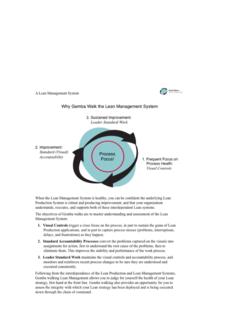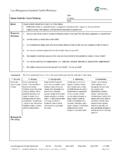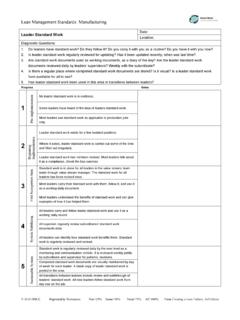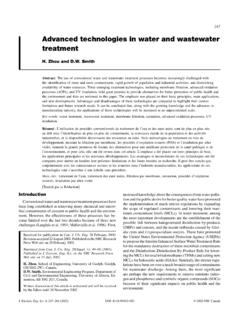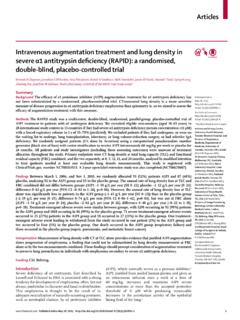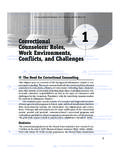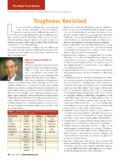Transcription of TheMissingLink:LeanLeadership
1 David Mann 15 themissinglink :LeanLeadershipBYDAVIDMANN S ummary People often equate Lean with the tools that are used to cre-ate efficiencies and standardize processes. However, implementing tools rep-resents at most 20 percent of the effort in Lean transformations. The other 80percent of the effort is expended on changing leaders practices and behaviors,and ultimately their mindset. Senior management has an essential role inestablishing conditions that enable that 80 percent of the effort to involvement includes establishing governance arrangements that crossdivisional boundaries, supporting a thorough, long-term vision of the organi-zation s value-producing processes, and holding everyone accountable formeeting Lean commitments.
2 This is accomplished through regular, directinvolvement. When upper management sets the example, durable Lean suc-cess and an increasingly Lean leadership mindset Mann, PhD, an organizational psychologist, retired as the manager ofLean management and organization development after 21 years at Steelcase inGrand Rapids, MI. He is a consultant on Lean issues to healthcare and :44 PMPage15 IntroductionThere is a missing link in Lean. Thismissing link is the set of leadershipbehaviors and structures that make up aLean management management bridgesa critical divide: the gapbetween Lean tools andLean thinking.
3 SystematicLean management sepa-rates Lean initiatives that start well but fal-ter from those that sustain initial gainsand deliver further leaders play a central role inLean management. Their contributionsare essential in:1. Developing and implementing struc-tures and processes that anticipate andrespond to the difficulties of a Lean ini-tiative that crosses internal boundaries;2. Transforming commitments to changeinto actual change, supporting and sus-taining new behaviors and practices;3. Increasing the odds that processimprovements survive the transitionfrom project mode to ongoing process;4.
4 Establishing and maintaining new,process-focused measures alongsideconventional measures of results;5. Creating conditions in which a sustain-able Lean culture of continuousimprovement can an enterprise-wide Lean initiativeto succeed, leaders at three organizationallevels must play complementary 1 shows a schematic of these threelevels, areas of primary contribution, andtasks. Note the overlap between adjacentlevels. This overlap reinforces continuityof support for new practices throughoutthe organization, , disciplined adher-ence, attention to process performance atintersections, and gemba walking (whichtakes managers to the front lines to lookfor improvement opportunities).
5 This con-tinuity maintains the internal integrity ofLean tool implementations and the Leanmanagement of the literature on Lean conver-sions has focused on implementing theLean tools (to create flow, establish pull,support just-in-time production, etc.) inmanufacturing (Womack and Jones1996; Rother and Shook 1998; DennisLean management bridgesa critical divide: the gapbetween Lean tools andLean frontiers of health services management 26:1 Figure 1. Organizational Roles and Contributions to Sustaina Lean InitiativeOrganizationLevelPrimaryContri butionTasksSecondaryContributionTasksStr ategic: Senior(CEO, Sr.))
6 VP)Governance; Steer-ing and oversightSupport for a cross-boundary perspectiveMeasurement; Adher-ence to post-projectprocessesMonitor intersectionmeasures; Gemba walksProgrammatic:Function (VPs,Directors)AccountabilityMeet project commit-ments; Manage inter-section performanceDisciplined adherence;Commitments toprocesses post-projectCollaborate in processmanagement; GembawalksTactical: Depart-ment (Managers,Supervisors)Tactical LeanMgment SystemDisciplined adherence;Gemba walksAssociate engage-ment; ContinuousimprovementTeach, practice rootcause problem :44 PMPage162002). Some of the literature hasexplored Lean tools in healthcare, officesettings, or product developmentprocesses (Graban 2008; Keyte andLocher 2004; Swank 2003); or focusedon leadership rather than tools (Mann2005; Spear 2004).
7 Critiques of the tools-only focus note that even brilliant use oftools without changes in culture rarelyproduces lasting change, or even lastingimprovement. But, what does culturemean in the context of Lean conversions?Culture, Reinforcement, andPersistenceFor purposes of this discussion, cultureis simply the sum of how those in anorganization would describe the way wedo things here. These customary waysof operating often directly contradictstated rules and policies. Behavior ,the customary way of doing things bothcreates and reflects actual culture regard-less of the official definitions of what isto be done, or how.
8 Behavioral scienceshows that reinforced behaviors persist,which helps explain how culturesdevelop. In an organization, the mostimportant source of reinforcement isleadership. The way we do inother words, reflects leaders reinforce-ments, conscious or sustained Lean conver-sions often involve changes in culture. Soit follows that success in Lean implies achange in what leaders reinforce achange in leadership behaviors and prac-tices. The failure of most Lean initiativescan be pinned on a failure to change lead-ership practices (Mann 2005).As Figure 1 suggests, effective leanleadership comes from the top as well asfrom lower in the organization.
9 Post-mortem discussions of unsuccessful Leanimplementations often blame the initia-tive s collapse on a failure to adhere to theLean design at lower levels. This failure inturn is often caused by changed, weak, orabsent support by senior leadership CEOs and their direct report senior three levels called out in Figure 1 areimportant, and closely Principles and ValueStreamsWomack and Jones (1996) identified sev-eral Lean principles. Their first is thatvalue is defined from the perspective ofthe customer. The second is that valuestreams need to be identified. Valuestream is another way to refer to aprocess.
10 Often, and especially in health-care, processes include multiple , in complex organizations, mostvalue producing processes cross manydepartmental and functional units in an organization play value-added (and frequently non value-added)roles in the value example, the following depart-ments are parts of a surgery value stream:admitting, scheduling, medicine, radiology,laboratory, surgery, operating room man-agement, pharmacy, nutrition services,nursing, patient transport, housekeeping,finance, billing, social work, purchasing,and compliance and audit units. There aremany multi-step cross-functional processeson the administrative side as well.
